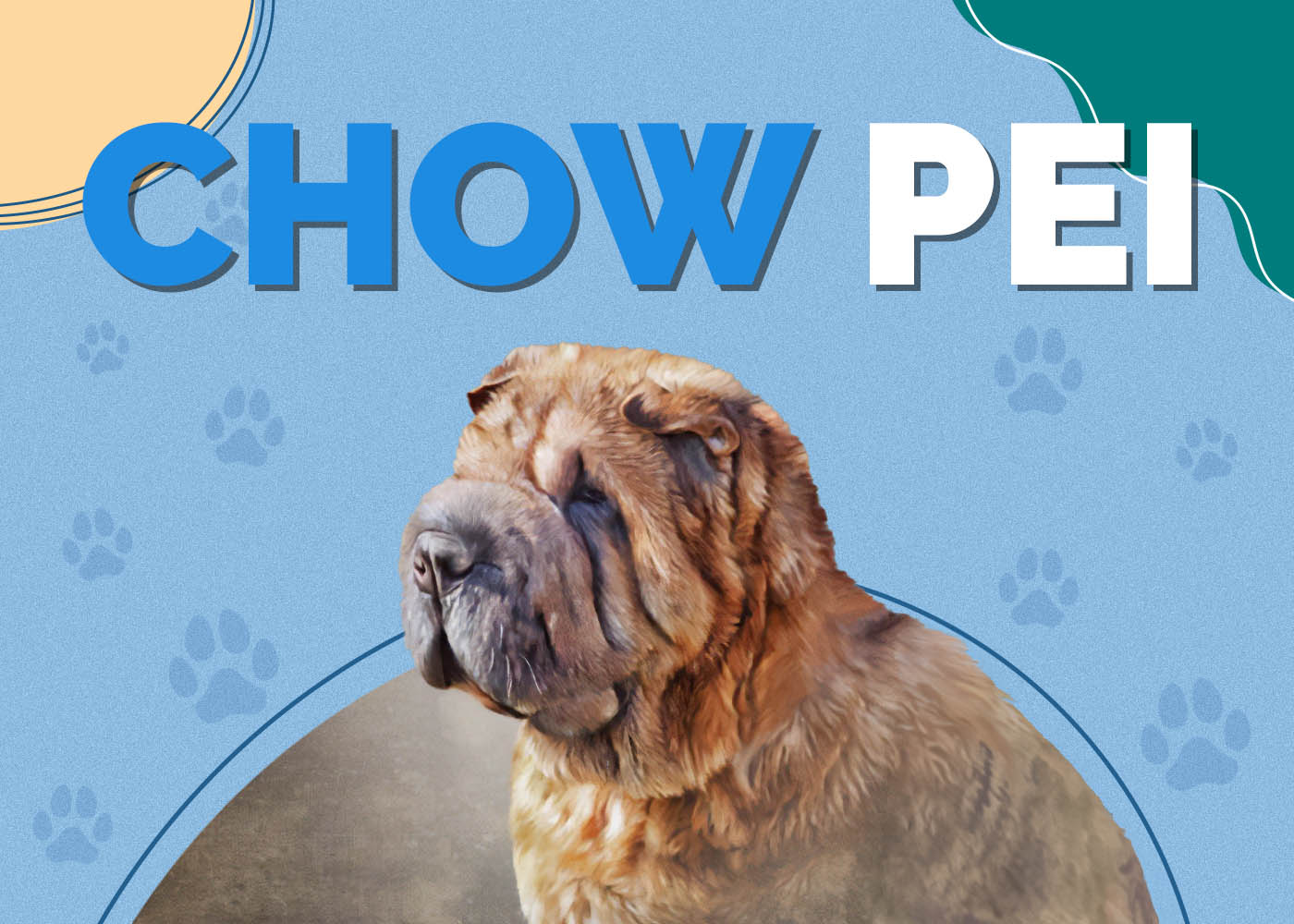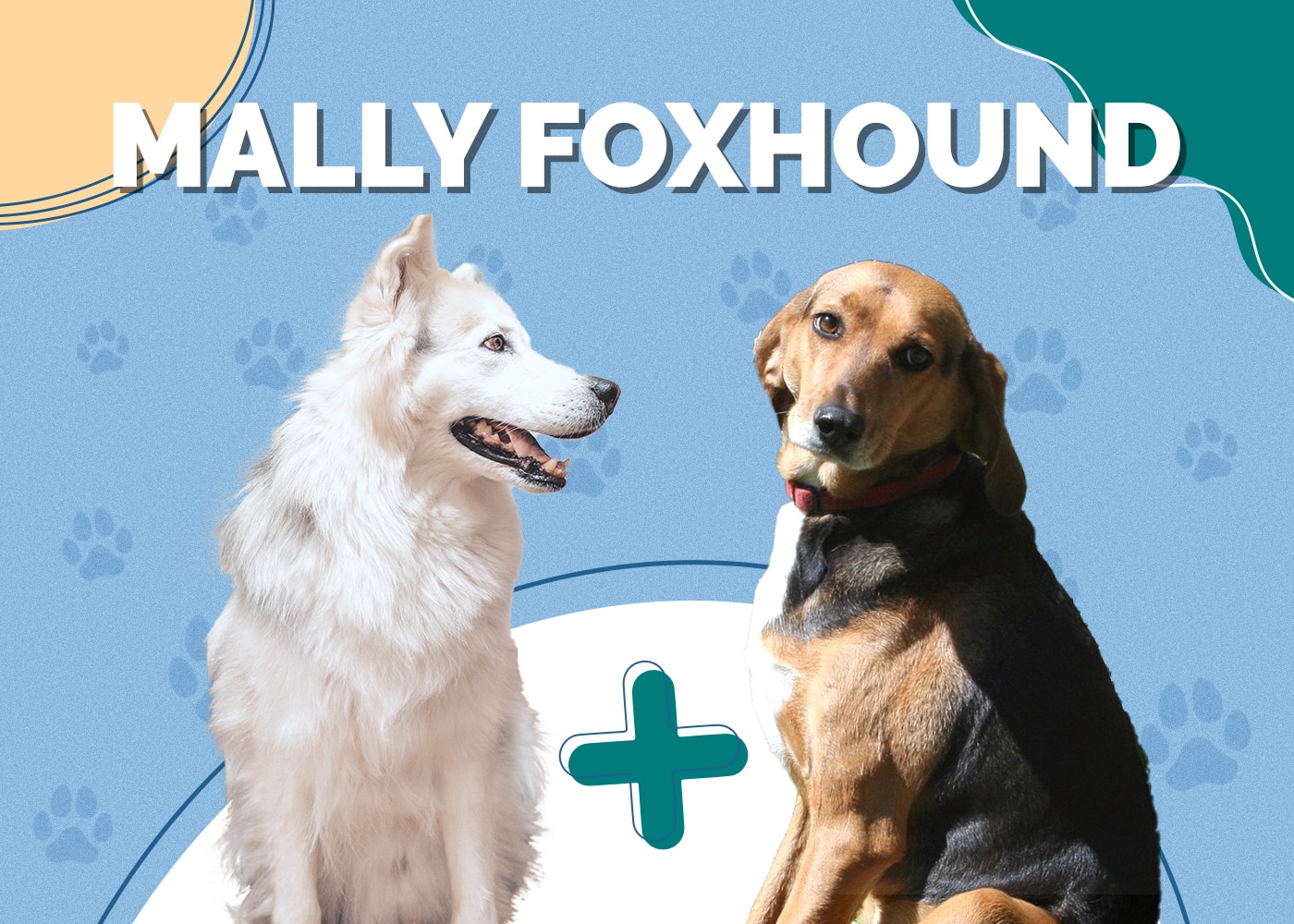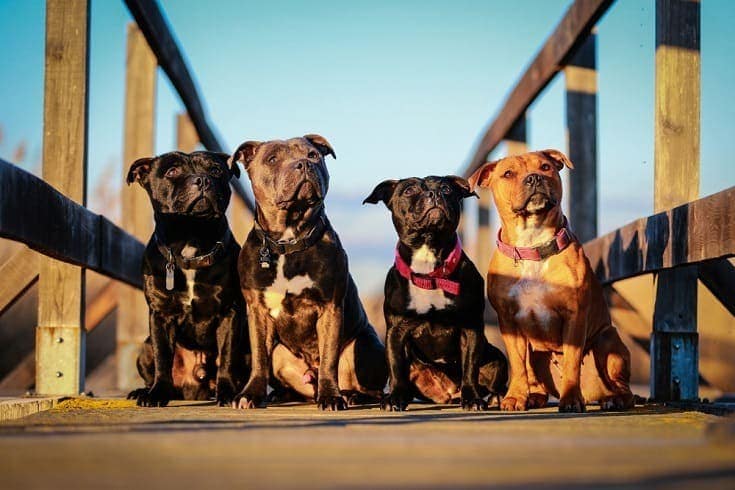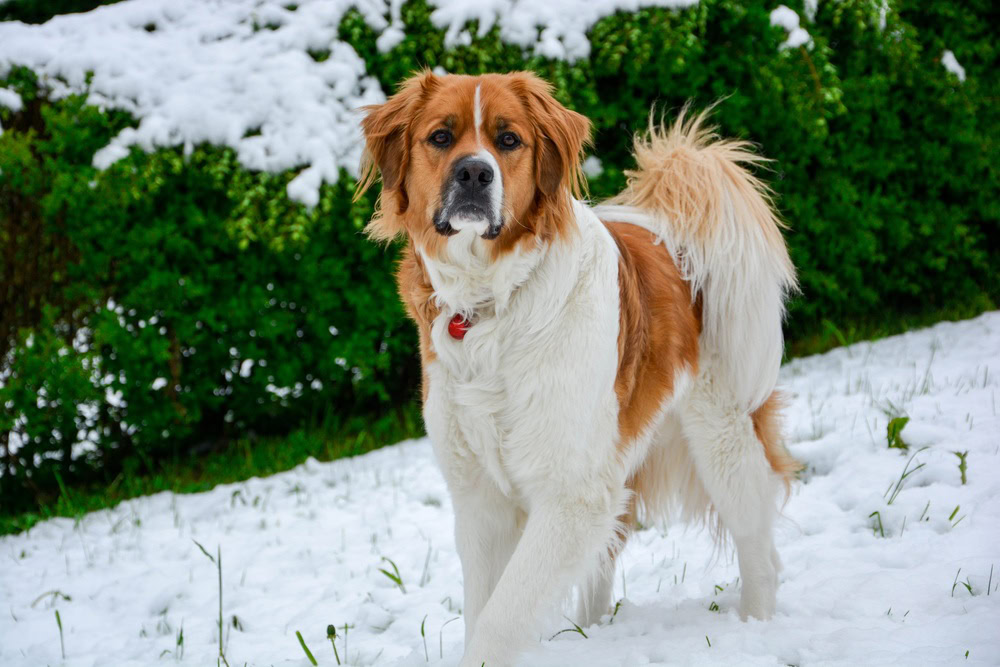Chow Pei (Chow Chow & Shar Pei Mix): Info, Pictures, Characteristics & Facts

Updated on

| Height: | 15-20 inches |
| Weight: | 40-60 pounds |
| Lifespan: | 10-15 years |
| Colors: | Black, brown, chocolate, gray, cream, white, golden |
| Suitable for: | Adults, experienced and patient owners, those looking for a good guard dog |
| Temperament: | Calm, intelligent, stubborn, independent, not good with other pets or children |
Are you looking for a strong-willed companion? One who will absolute pledge their whole life to protecting and keeping you free from harm? If so, you should look into getting a Chow Pei.
This Chow Chow and Shar Pei mix is an amazing companion dog and perfect for a single person household. They’re independent and solitary enough that they can withstand longer periods of separation, but also happy and excited to see you return.
Chow Pei dogs do, however, come with their own set of challenges, and it’s going to take someone who’s just as patient, stubborn, and strong as they are to surmount them.
Chow Pei Puppies
You really need to understand that Chow Pei puppies (and adult dogs for that matter) are not as simple as other dogs. These aren’t good for first-time dog owners. They’ll require extra care during their training, grooming, play, and exercise. Even feeding them needs to be done with precision and care.
The Chow Pei is a hybrid dog breed between the Chow Chow and Chinese Shar-Pei. Both of these parent breeds are extremely strong-willed and regal dogs. Chows are one of the most ancient of dog breeds and are known throughout history as expert hunting and working companion dogs. But that’s just one side. The Shar-Pei was first bred as a ratter and guard dog — even becoming an imperial guard dog to the ruling elite of China.
Needless to say, this is a very strong breed. You will quickly find yourself in over your head if you cannot rise to meet the challenge of properly training your pup.
3 Little-Known Facts About the Chow Pei
1. They Are Internationally Recognized Hybrids
This hybrid dog breed is actually recognized by two major designer dog registries: the Designer Breed Registry and the International Designer Canine Registry.
2. Chow Peis Make Excellent Guard Dogs
Due to the ancient and storied histories of both their Chow Chow and Shar-Pei lineage, Chow Peis are some of the best guard dogs you will find. And you’ll find they are deeply devoted to protecting their master.
3. Their Appearance Differs Over a Huge Range of Traits
There are many designer dogs out there that look very similar within their breed. However, such is not the case with the Chow Pei. Chow Peis come in all shapes and colors — all dependent on the genetic lottery it receives from its parents. There is one thing that they all have in common though: they not considered hypoallergenic. So, you may want to avoid Chow Peis if you’ve got allergies.

Temperament & Intelligence of the Chow Pei
The Chow Pei is a very unique dog for a dog lover to have. Once properly trained, this breed is extremely loyal and devoted to their masters — a loyalty that can lead to unchecked aggression against any perceived threats or nuisances.
But you’ll often find that their devotion is more singular in nature. While they may be completed dedicated to you, they may have reservations for other members of the family. This is why this breed isn’t the best dog for families, especially for those with children.
Are These Dogs Good for Families? 👪
While there are a lot of absolutely wonderful dog breeds for families out there, this is not one of them. The Chow Pei is a designer dog that inherits the traits of each of its parents. Both of whom are not the best for families, especially for those who have small children.
This breed can be somewhat brooding and temperamental. Small children often have trouble grasping the concept of giving dogs space. And while this may make for some adorable picture and play opportunities for breeds such as Golden Retrievers and Labs, this can spell trouble with the Chow Pei.
Does This Breed Get Along With Other Pets?
The Chow Pei has a very deep ancestry when it comes to both the Chow Chow and Shar-Pei sides of the family tree, and these roots run deep as guards and fighting dogs. These aggressive traits — although mellowed — have rolled over into this breed.
That doesn’t mean that they can’t be broken of these undesirable traits. Early socialization with other dogs and animals as a puppy can help to foster a positive environment around other pets. But you’ll still want to supervise your dog and maintain positive leash control around strange dogs and people.
Things to Know When Owning a Chow Pei:
Properly raising a Chow Pei requires special consideration. Their headstrong and defensive nature can prove to be a challenge for many dog owners. That doesn’t mean they’re bad dogs though. You’ll just need to be more patient with them until they’re properly trained.
Food & Diet Requirements 🦴
Being a larger breed, Chow Peis require a much more substantial amount of food than some dogs. You’ll want to feed your dog right around 3 cups of food every single day. However, there are a few things you should keep in mind.
First, the Chow Pei is extremely prone to obesity. They really love to eat and will never leave a half-eaten bowl of kibble lying around. And second, this dog is extremely defensive of its food bowl. The best way to feed this pup would be to allow the dog to find its bowl already filled. They may get too excited if you’re pouring it into their bowl with them standing nearby. And after they start eating, stay back until they’re finished.
Exercise 🐕
Although these dogs are perfectly content in solitude, they are a relatively active dog that requires daily exercise. While not the most playful, they’re often found guilty of wanderlust and following wherever their nose may lead. A daily walk will more than satisfy their needs. However, this is not a dog you’ll want to let roam leash-free.
Their wanderlust will take them far, and it may be difficult for them to make their way home. Apart from that, their aggressive stance towards strangers and other dogs could make them dangerous if lost in a strange place.
Training 🦮
Despite this breed’s high intelligence, they’ve proven relatively difficult to train. This is due to the Chow Pei’s headstrong personality. They are very stubborn and independent, making training these pups harder than most. This is why Chow Pei owners need to be strong-willed and patient. Obedience schools are a wonderful option for your Chow Pei puppy. This will give them critical interaction with other puppies and professional guidance for handling.
Grooming ✂️
When it comes to grooming your Chow Pei, it’s kind of a toss-up. If you look at the two parent breeds, you’ll see radical differences when it comes to their coats. Chows generally have long thick coats, while Shar-Peis have very short coats and shed very little. So, it’ll depend on your Chow Pei’s specific inherited traits. This breed’s coat can range all along the spectrum.
One thing to definitely want to pay extra attention to is bathing your pup — especially if your Chow Pei has several skin folds. While your dog won’t need extremely frequent bathing, they’ll need extra attention to drying after they do have a bath. Their skin folds make for ideal breeding grounds for yeast or fungal infections.
Health Conditions ❤️
Chow Peis are prone to most of the ailments other dogs fall privy to. However, they face additional concerns due to their skin folds. As mentioned above, these folds are ripe for bacteria, yeast, and fungal infections. A good thorough cleaning between these folds with an equally strenuous drying can help to prevent these.
Also, this breed tends to have pretty sensitive skin. It’s not uncommon to find rashes or red splotches. This could be due to a number of things. Consult with your vet if you run across these issues.
But it’s not just hygienic issues that their skin folds cause. The folds can lead to excess fluid retention within their bodies, especially in the legs. This can make walking very painful for your Chow Pei and means they will require veterinary attention.
- Arthritis
- Skin fold issues
- Brachycephalic syndrome
- Skin issues
- Eye problems
- Hypothyroidism
- Cancer
- Patellar luxation
Male vs. Female
As far as physical differences between the sexes, there really aren’t many. Both males and females grow to the same heights and weights with no real dissimilar markings.
However, there have been some noticeable trends between different owners and dogs. The female of the breed is often much more independent than the male. She’ll be perfectly content to entertain herself without your direct interaction. Females are often more defensive and shy around strangers.
The males, on the other hand, tend to take a more hands-on approach to their companionship. They’ll often shadow their masters even if they’re just sulking in the corner of the room.
Final Thoughts on the Chow Pei
The Chow Pei is not an excellent family dog. It’s not the easiest to train. And it’s definitely not the easiest dog to groom. But that’s ok.
If you need a loyal companion that’ll be there for you no matter the trouble, a Chow Pei is a great option. And if you need a stout bulwark and protector, there are very few breeds out there with the dedication that a Chow Pei has.
Sure, there are going to be some challenges. But once surmounted, you’ll find that the Chow Pei will love you just as hard as any other dog, even if it is from the other end of the couch.
See Also:
- Sharmatian (Shar Pei & Dalmatian Mix): Pictures, Care Guide, Temperament & Traits
- Box-a-Shar (Boxer & Shar Pei Mix): Info, Pictures, Characteristics & Facts
Featured Image Credit: dezy, Shutterstock














